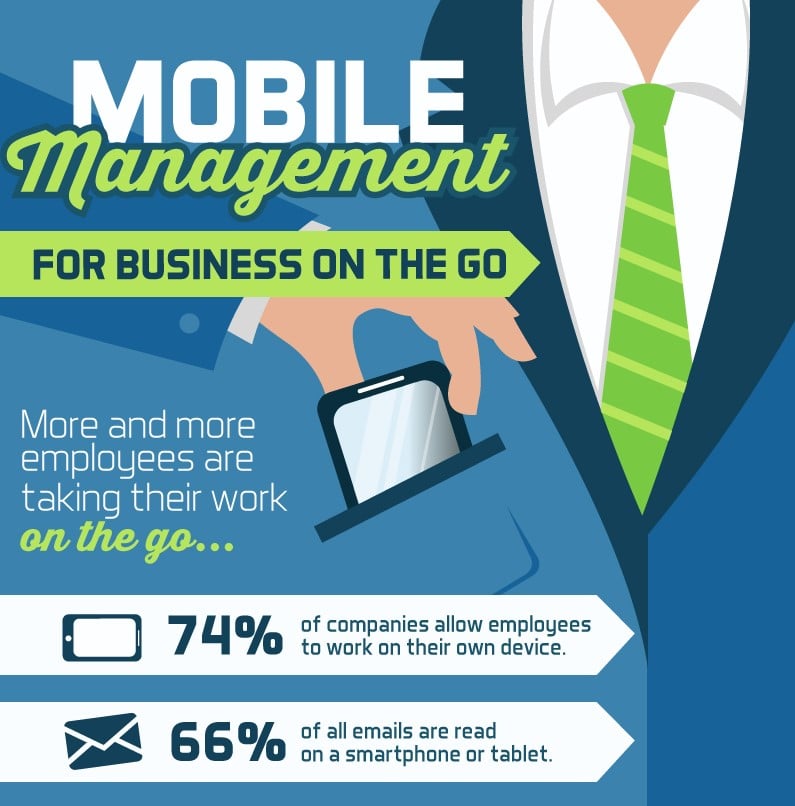Mobile app development is a burgeoning industry. In 2017, 197 billion downloads were completed across the globe. That number is expected to rise to over 350 billion by 2021. According to 2017 statistics, the top apps are all owned by titanic corporations like Google, Amazon, and Facebook, and they have high penetration in their own markets. But that means all of that growth will come from non-dominant apps. After all, the Facebook app will only be downloaded once per device, it already penetrates 81% of its market. Modern society lives on the internet, and we already conduct significant volumes of business either on the internet or assisted by the internet and mobile technologies.
There are several areas where app growth will occur, including those that connect employees and employers for better productivity and efficiency. For businesses, mobile management is ever more important, for employees are demanding more time away from the desk and simultaneously businesses remain locked in fierce competition.
In early 2017, Pew Research found that smartphone penetration in the United States had almost reached 80%, with half owning a tablet, too. 12% of people even rely completely on their smartphone for high-speed internet access. Americans are highly mobile when it comes to communications technology.
Bring your own device (BYOD)
That high smartphone penetration implies businesses can easily connect employees through their own devices. In fact, a high percentage of employees (51% to be precise) are willing to circumvent company policies preventing the use of personal devices at work. This creates huge security vulnerabilities if unapproved devices are connected to a corporate network. One solution is to ban device usage. A better solution is to embrace BYOD, giving employees the option to use personal devices so at least it is known the device is in use.
Aside from security issues, BYOD might help employees feel more connected to their work. Since we spend so much time using and customizing our own devices for our own experiences, it makes sense that incorporating work into that highly-customized and linked environment will yield close connections to the work itself.
Implementing BYOD
Making the switch to BYOD could save the company money by both avoiding costly hacks and by having devices that are closely guarded by employees. Once that decision is made, companies must actively manage connected devices and inform employees of basic safety rules.
Important steps include using passphrases or biometrics if possible, requiring antivirus and antimalware software, and being able to remotely wipe lost or stolen devices. Tech-savvy users will already likely have these features, and those who do not can be convinced by educating them on the security issues posed by ignoring these basic features (to both company and private data).
Regarding management, companies should consider VPNs and mobile device management (MDM) software. VPNs are an established corporate technology that many work-from-home corporate employees are likely already familiar. VPNs are doubly important for mobile users, because Wifi is the default connection method for mobile devices, and free Wifi is ubiquitous. However, Evil Twin or fake WiFi networks will sweep up corporate data. At least with a VPN, all traffic is ensured to be encrypted end-to-end, so fake WiFi hotspots will only sweep up gibberish. At the very least, data should be transmitted over HTTPS if no VPN is in place.
To make life easier on the IT team, MDM software assists in fencing off corporate and personal apps, keeping corporate data off personal cloud storage, syncing data company wide for both employee and employer devices, and enabling remote device wiping. IT departments have enough on their plates with constant attacks and the necessity of 99.9% uptimes. Using MDM can lighten the burden.
To see more regarding BYOD, its benefits, and its implementation, you can check out this illustrative infographic that succinctly summarizes the topic:







